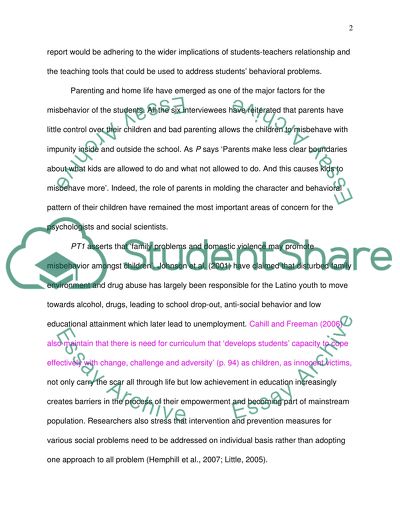Cite this document
(“Attitudes to students misbehavior Essay Example | Topics and Well Written Essays - 1250 words”, n.d.)
Attitudes to students misbehavior Essay Example | Topics and Well Written Essays - 1250 words. Retrieved from https://studentshare.org/education/1569456-attitudes-to-students-misbehavior
Attitudes to students misbehavior Essay Example | Topics and Well Written Essays - 1250 words. Retrieved from https://studentshare.org/education/1569456-attitudes-to-students-misbehavior
(Attitudes to Students Misbehavior Essay Example | Topics and Well Written Essays - 1250 Words)
Attitudes to Students Misbehavior Essay Example | Topics and Well Written Essays - 1250 Words. https://studentshare.org/education/1569456-attitudes-to-students-misbehavior.
Attitudes to Students Misbehavior Essay Example | Topics and Well Written Essays - 1250 Words. https://studentshare.org/education/1569456-attitudes-to-students-misbehavior.
“Attitudes to Students Misbehavior Essay Example | Topics and Well Written Essays - 1250 Words”, n.d. https://studentshare.org/education/1569456-attitudes-to-students-misbehavior.


